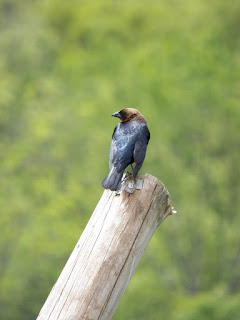A few weekends ago, I used a personal day that was about to expire to visit some Civil War battlefields (and test some camping gear for this summer's trip). I visited Gettysburg, Antietam and Harper's Ferry, as well as Cactoctin Mountain Park in Maryland. I'm currently doing an interdisciplinary Civil War unit with the social studies teacher, and the kids are going to ultimately have to make a museum exhibit about a Civil War topic. So I wanted to get a first-hand view of some battlefields and museums in order to make it more personal for them.
I'll start with Gettysburg. I've lived in Pennsylvania forever now, and I can't believe I've never made it here. The best place to start your visit is at the brand-new museum and visitor center, which costs about $9 bucks and is worth every penny. (No National Park passes accepted). The museum has several interesting exhibits that trace the war (including its causes and resolution). There's an entire wall that shows the numbers of Union and Confederate troops from each state. New York and the most, many of them new immigrants. Only South Carolina and Virginia had no Union regiments; the rest of the Southern states did.
The star of the Gettysburg visitor center is definitely the cyclorama. Painted by French artist Paul Philippoteaux, the 360-degree scene of Pickett's charge is over forty feet tall and illuminated by lights that change as they narrate the battle.
Outside the VC, which resembles a barn, there's a neat sculpture of Lincoln and a plaque that contains the famous Gettysburg Address.
The auto tour route is well-marked through Gettysburg. It starts out northwest of town and takes you through all of the Confederate lines and positions before bringing you up to the Union positions south and east of the town, ending at the National Cemetery. The first place I stopped was at the Eternal Light and Peace Memorial near the upper part of the Confederate line. I saw this brown-headed cow bird frolicking in the field.
It surprising how tranquil the fields look now, when you consider how many people died during the battle.
There are dozens, maybe even hundreds, of memorials scattered all around Gettysburg, placed and dedicated by the different states and regiments following the war. This is the Virginia memorial, which depicts Robert E. Lee on his horse Traverse, looking over the field where Pickett's charge would occur.
The auto-tour eventually takes you up to Little Round Top, which gives you a pretty good view of the area and helps you understand why the Union position was so strong. The rocks in the left middle ground are called Devil's Den, where Confederate sharpshooters hid to take shots at Union troops up on the hill. The area immediately below Little Round Top is referred to as the Valley of Death because so many soldiers were killed charging up the hill.
This is the memorial to General Grant, which is situated near his headquarters at the rear of the Union line.
At the National Cemetery, the graves are arranged in semi-circles by state, with many of the headstones numbered to indicate where an unknown soldier lies.
The main memorial is on the spot from which Abraham Lincoln delivered the Gettysburg addressed.
The auto tour of Gettysburg takes several hours, but by reading all the signs, as well as getting out of your car at the stops to walk around, you get a sense of what the battle was like. I'm glad I finally took the time to visit.









No comments:
Post a Comment